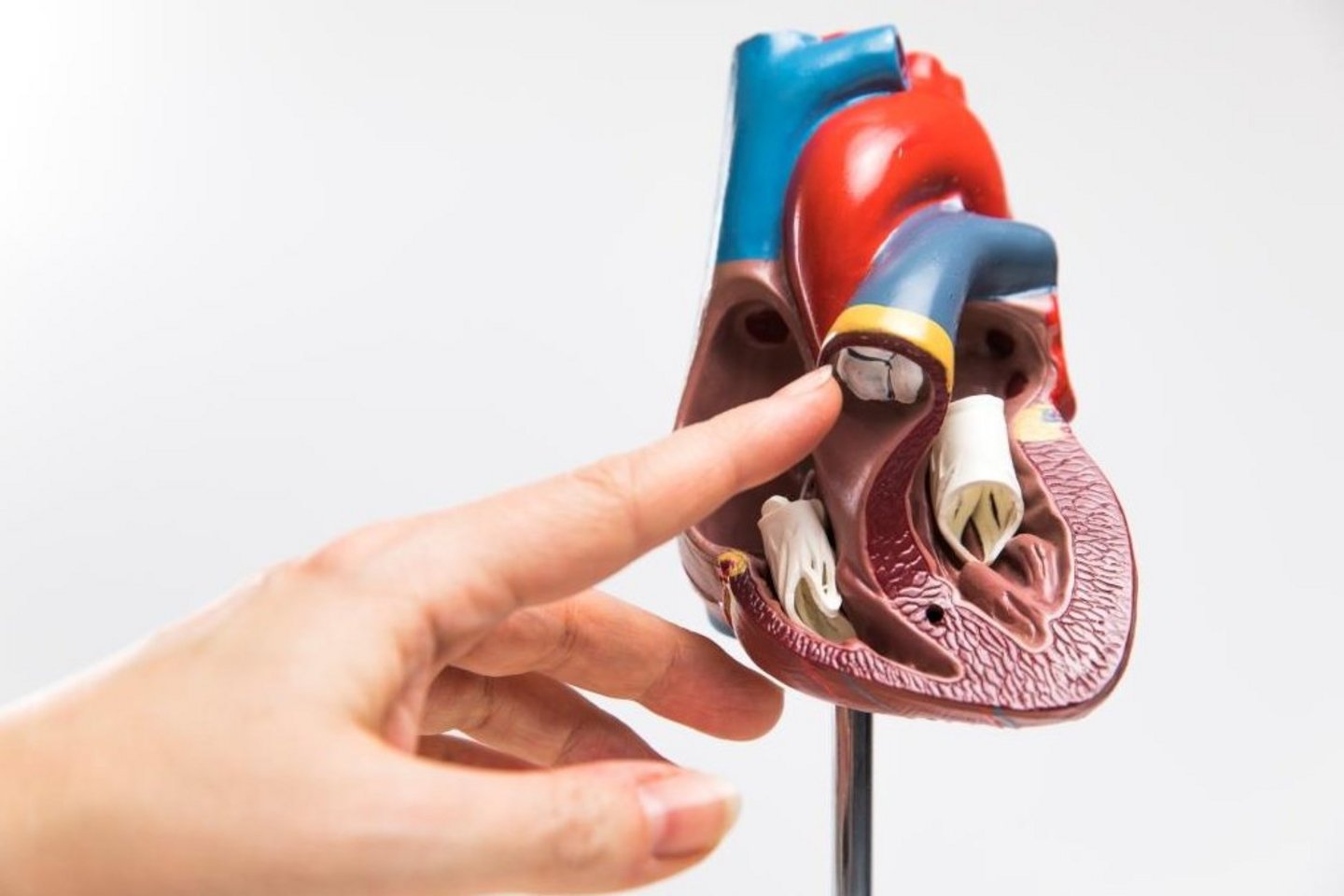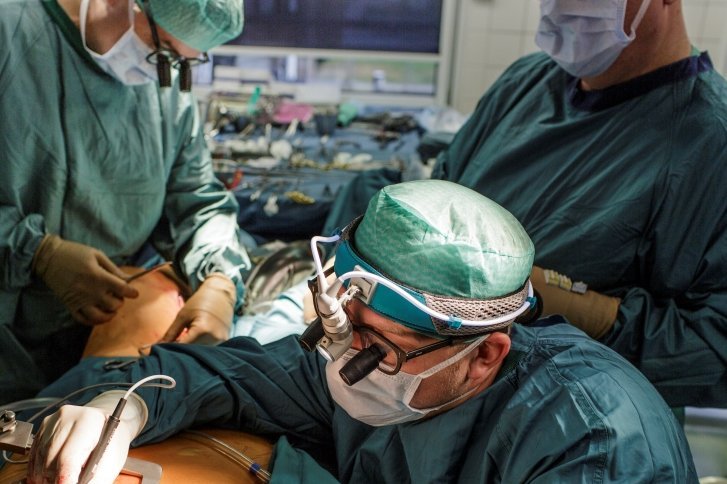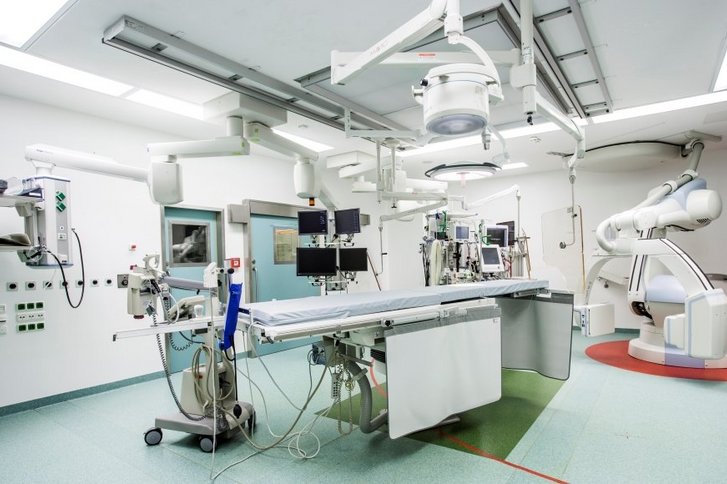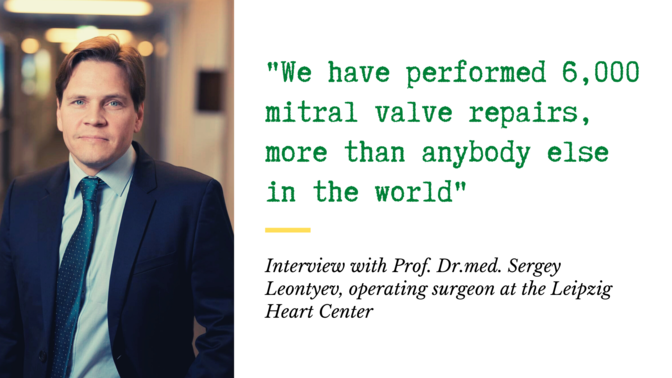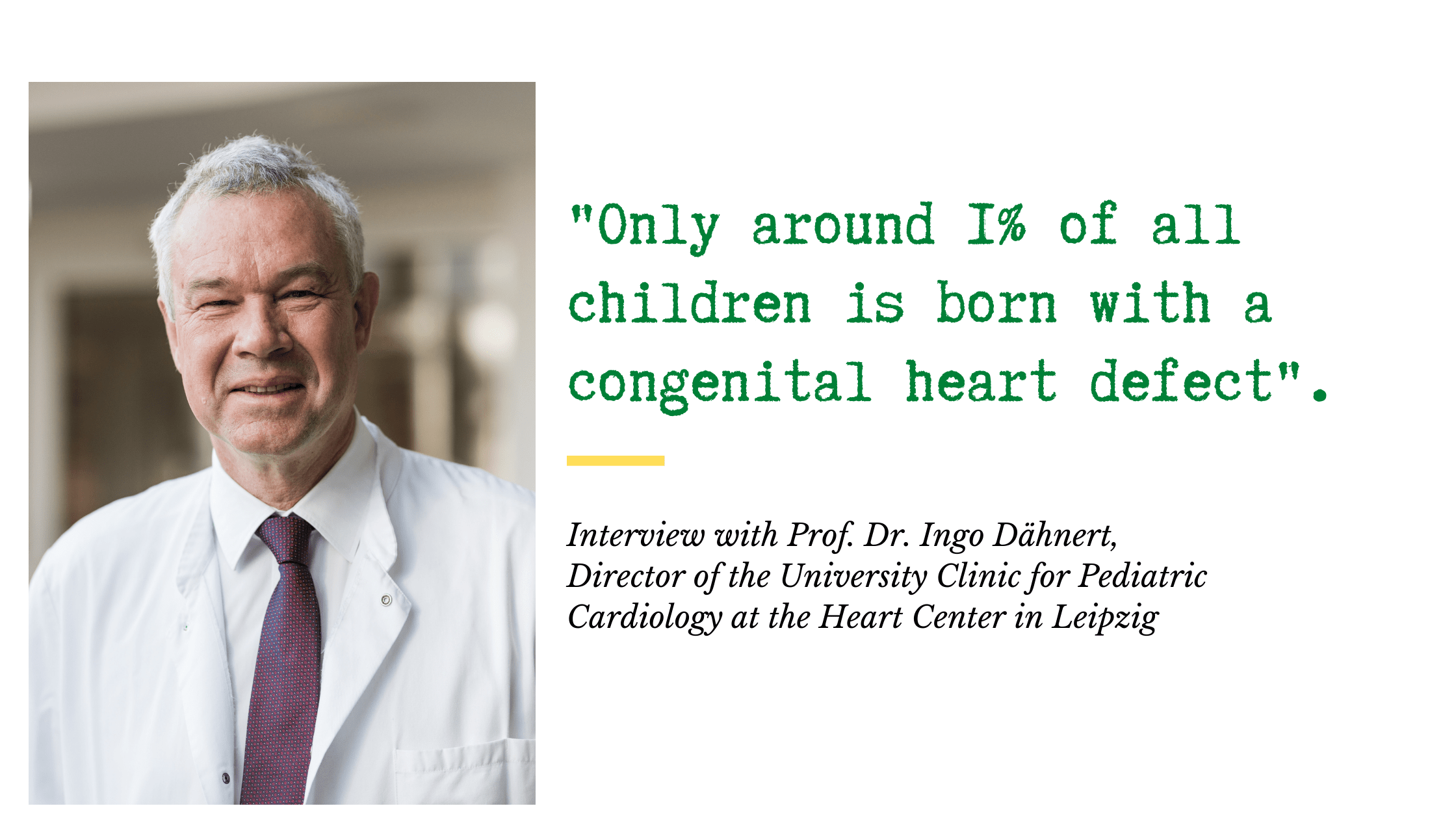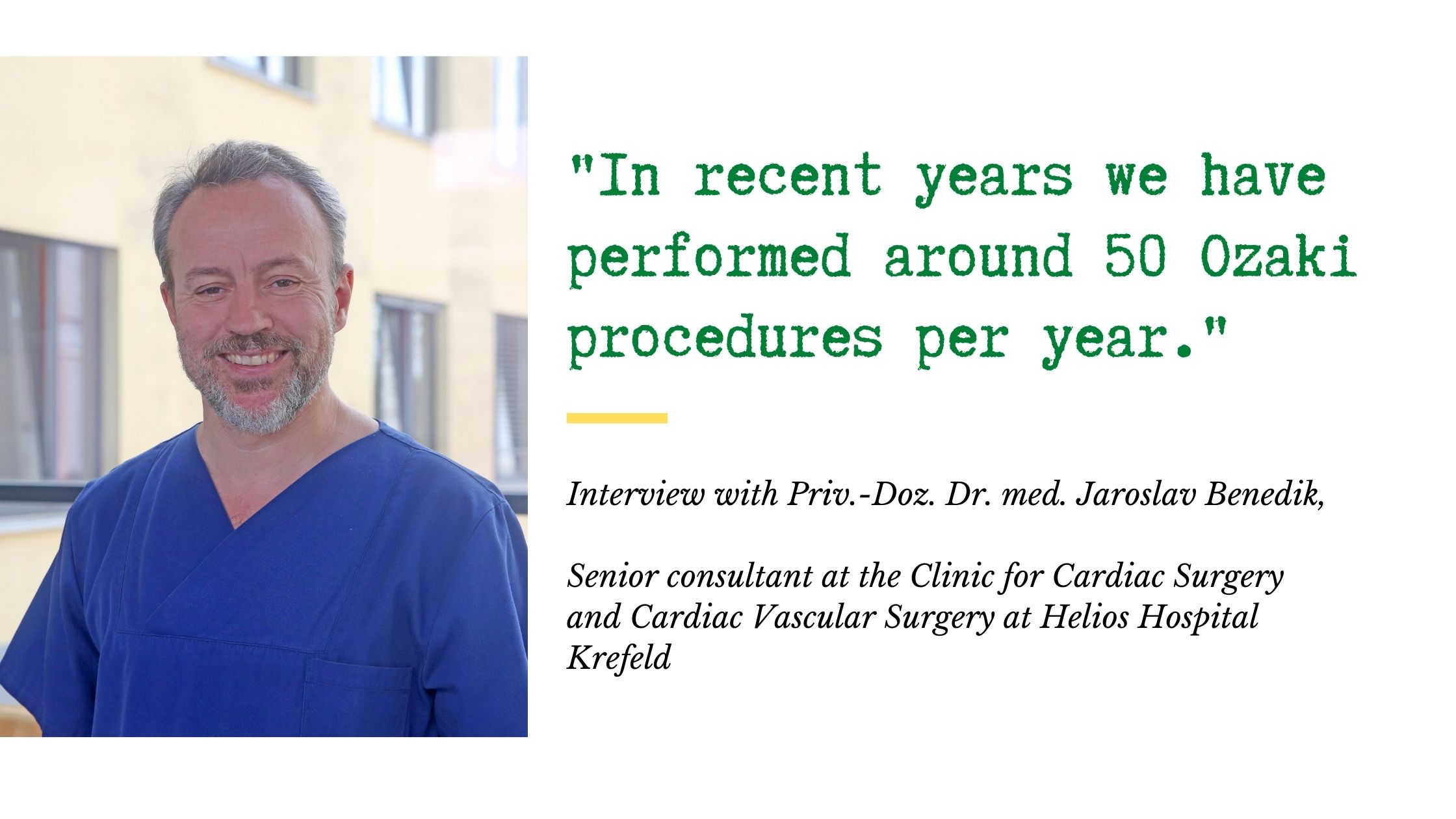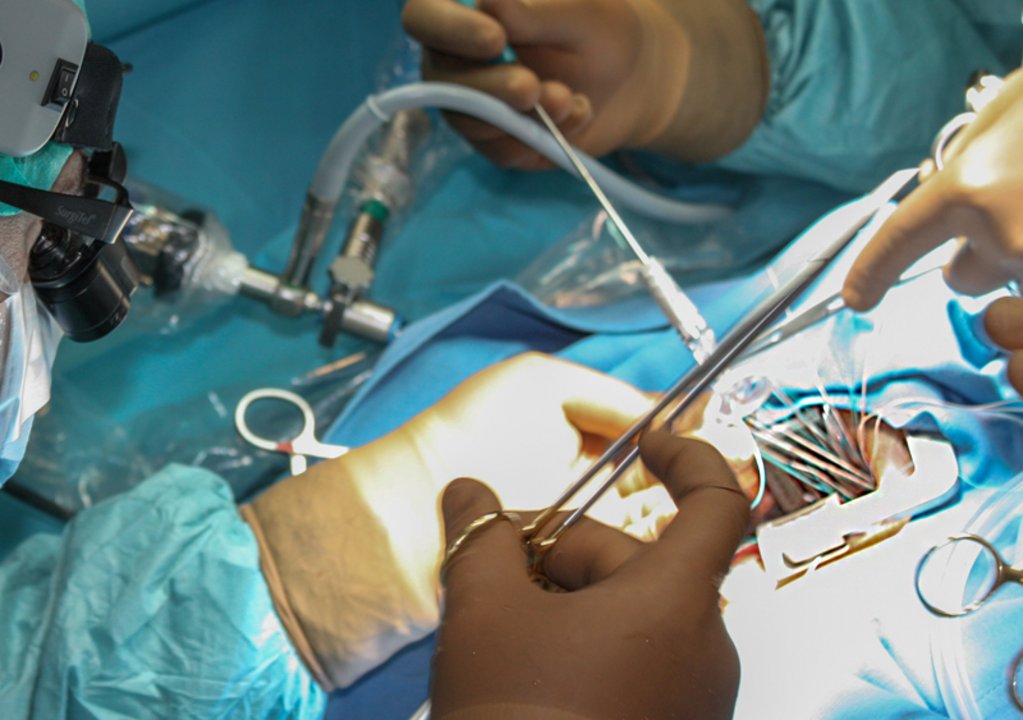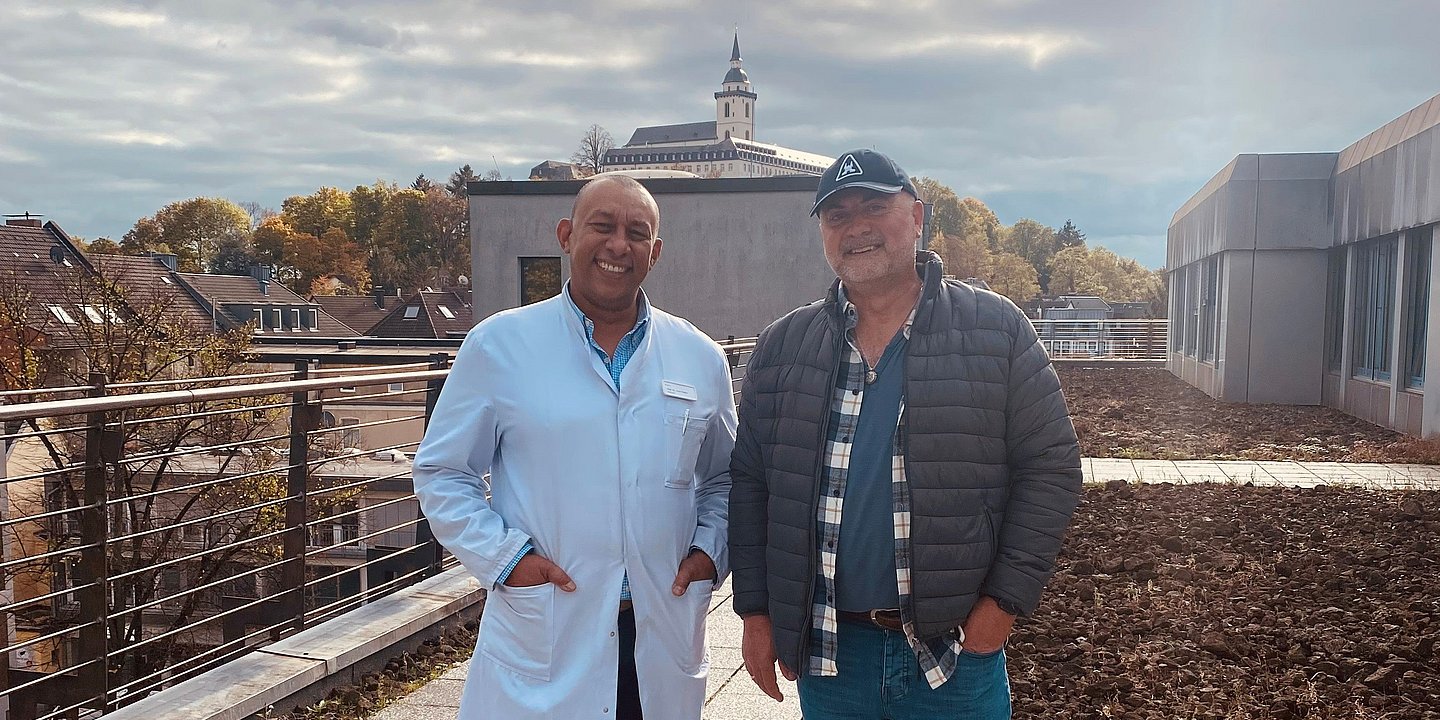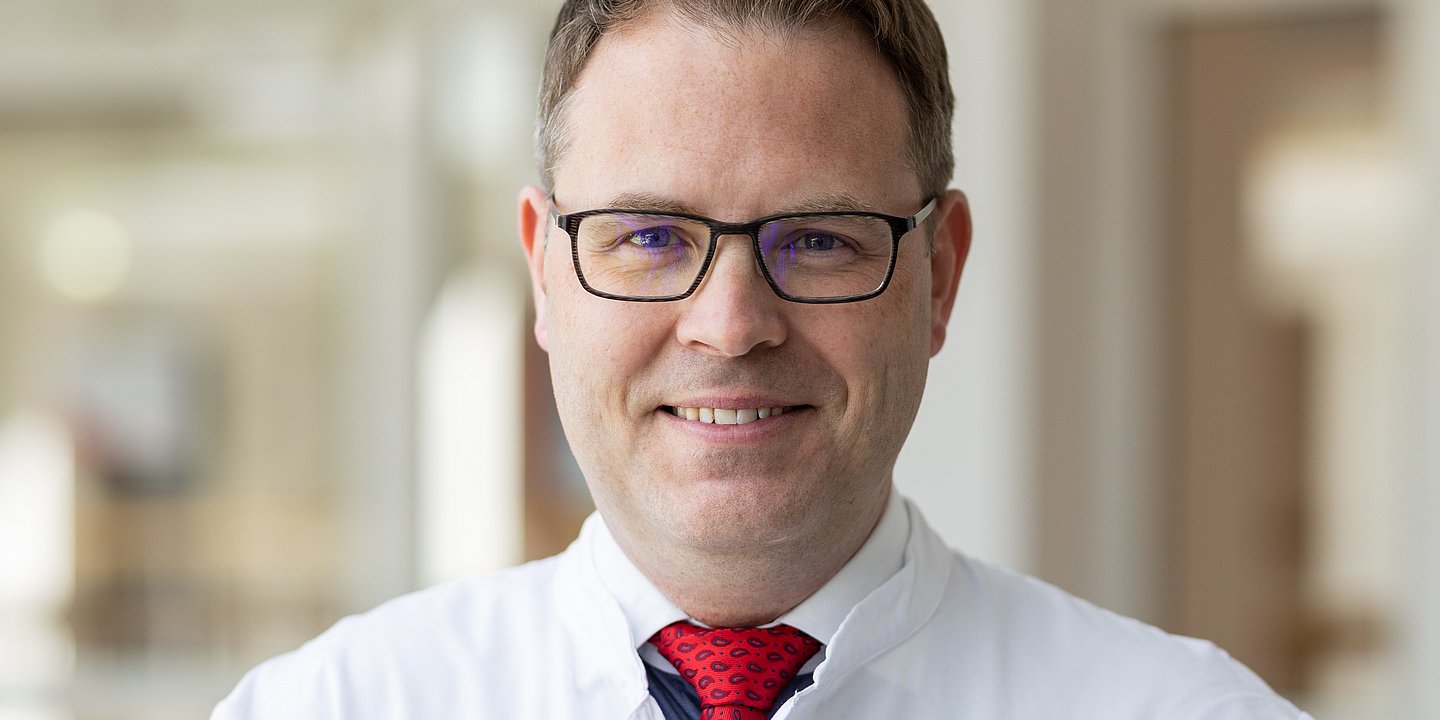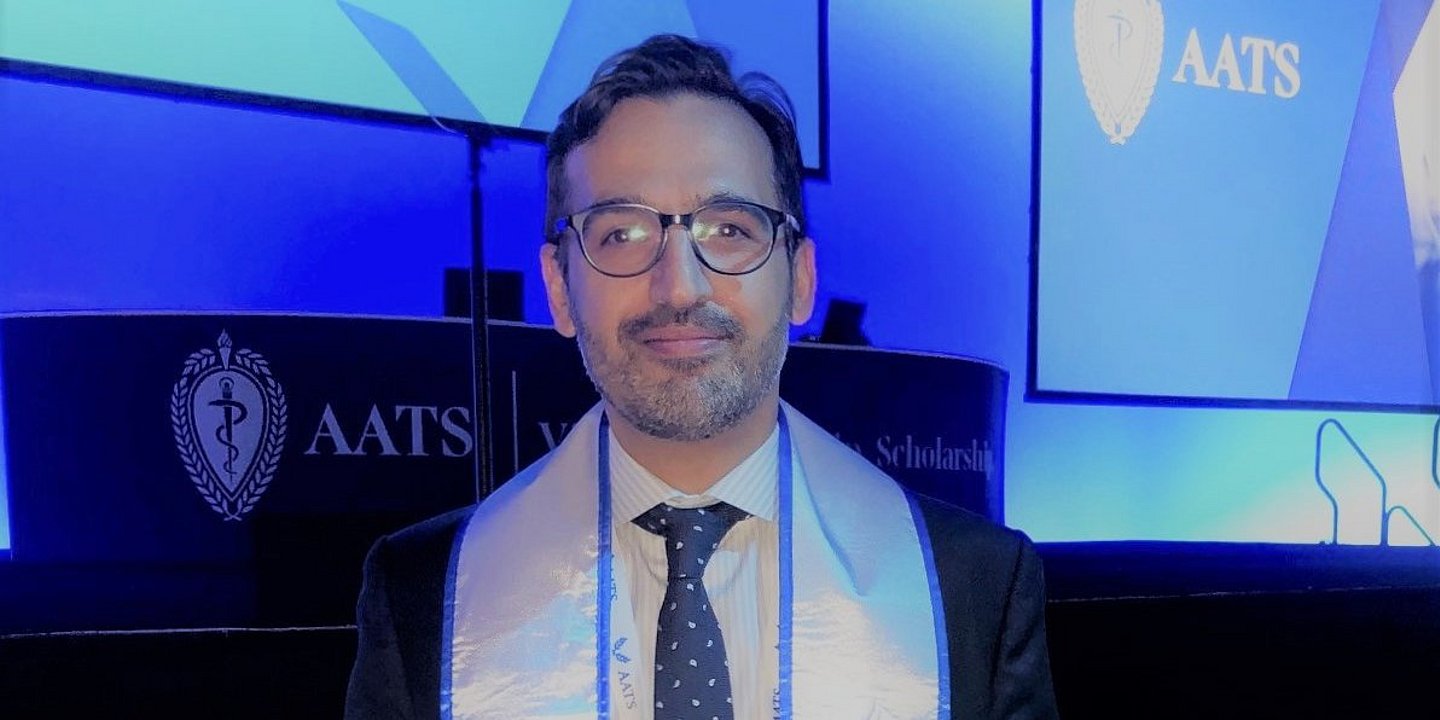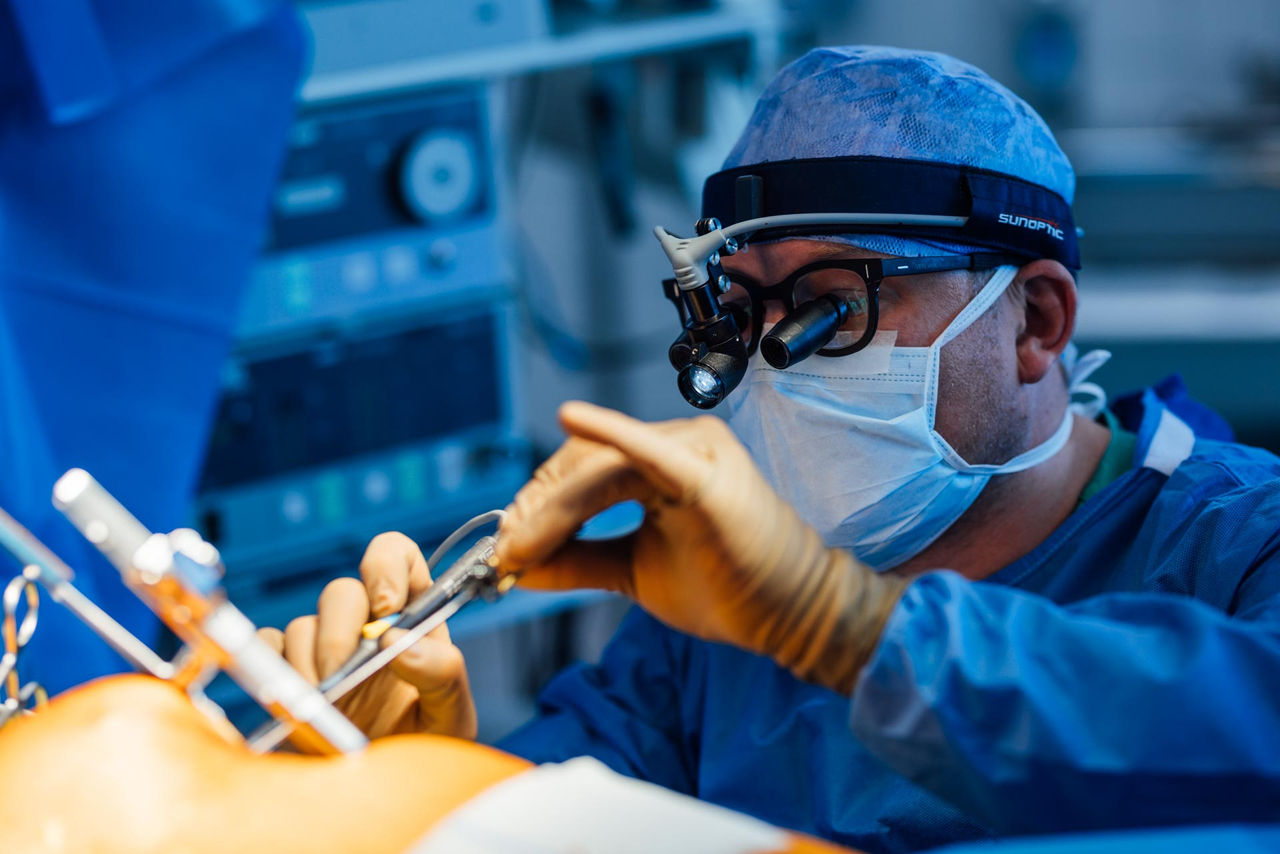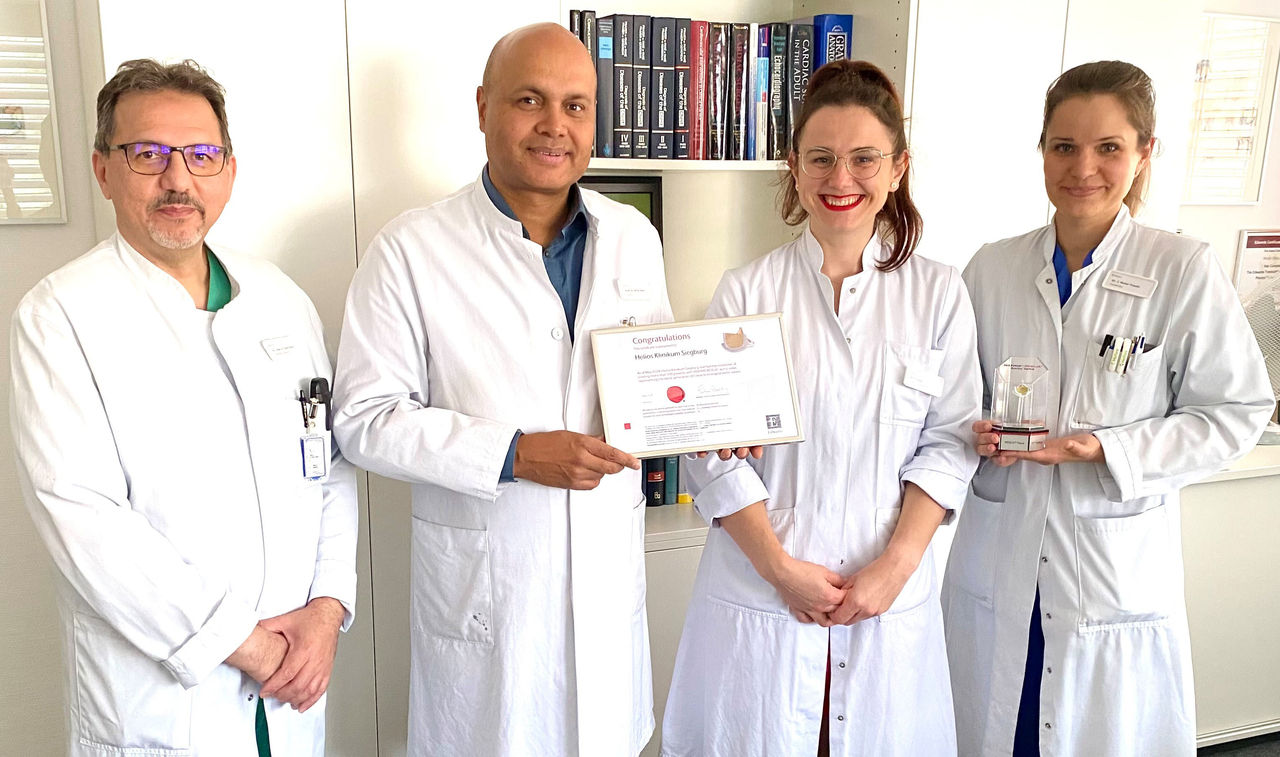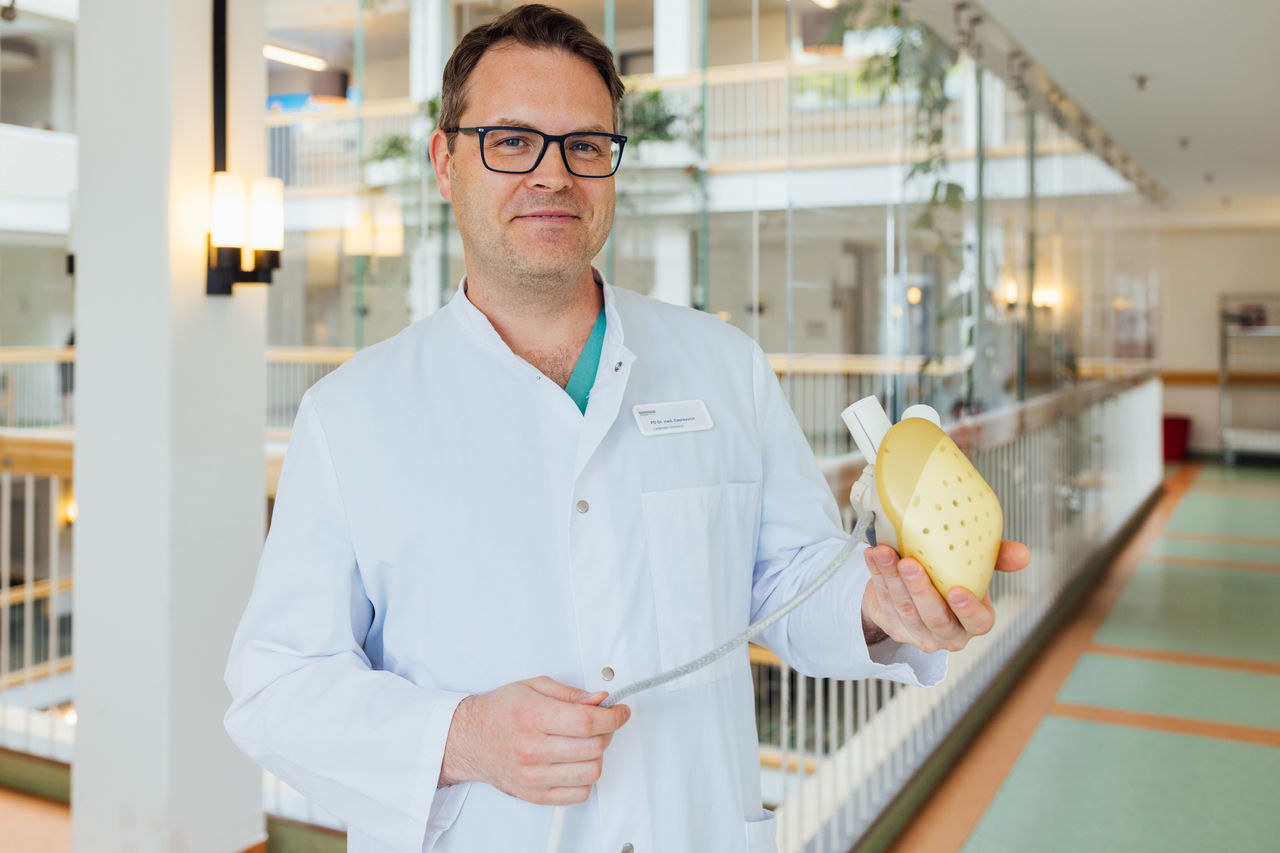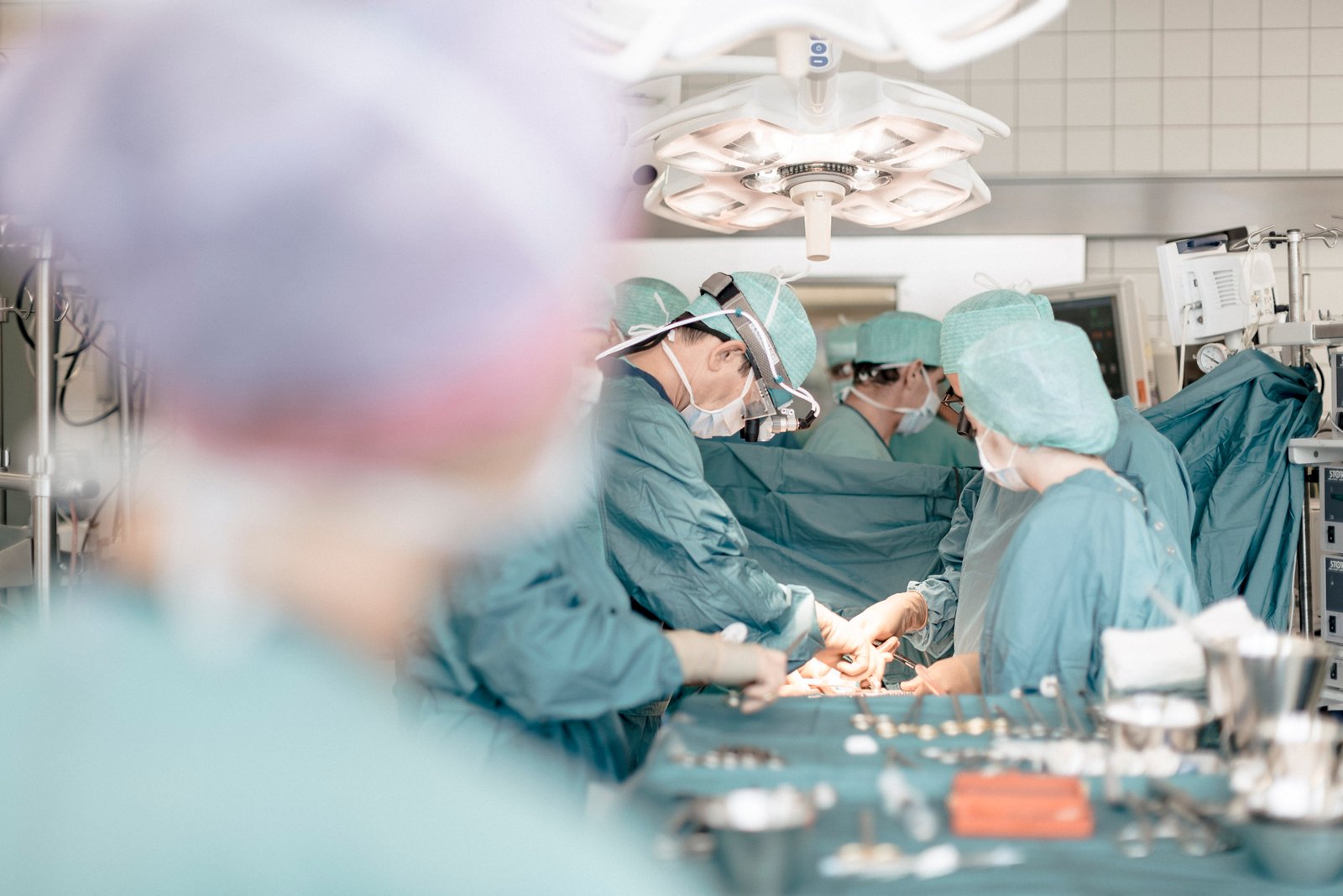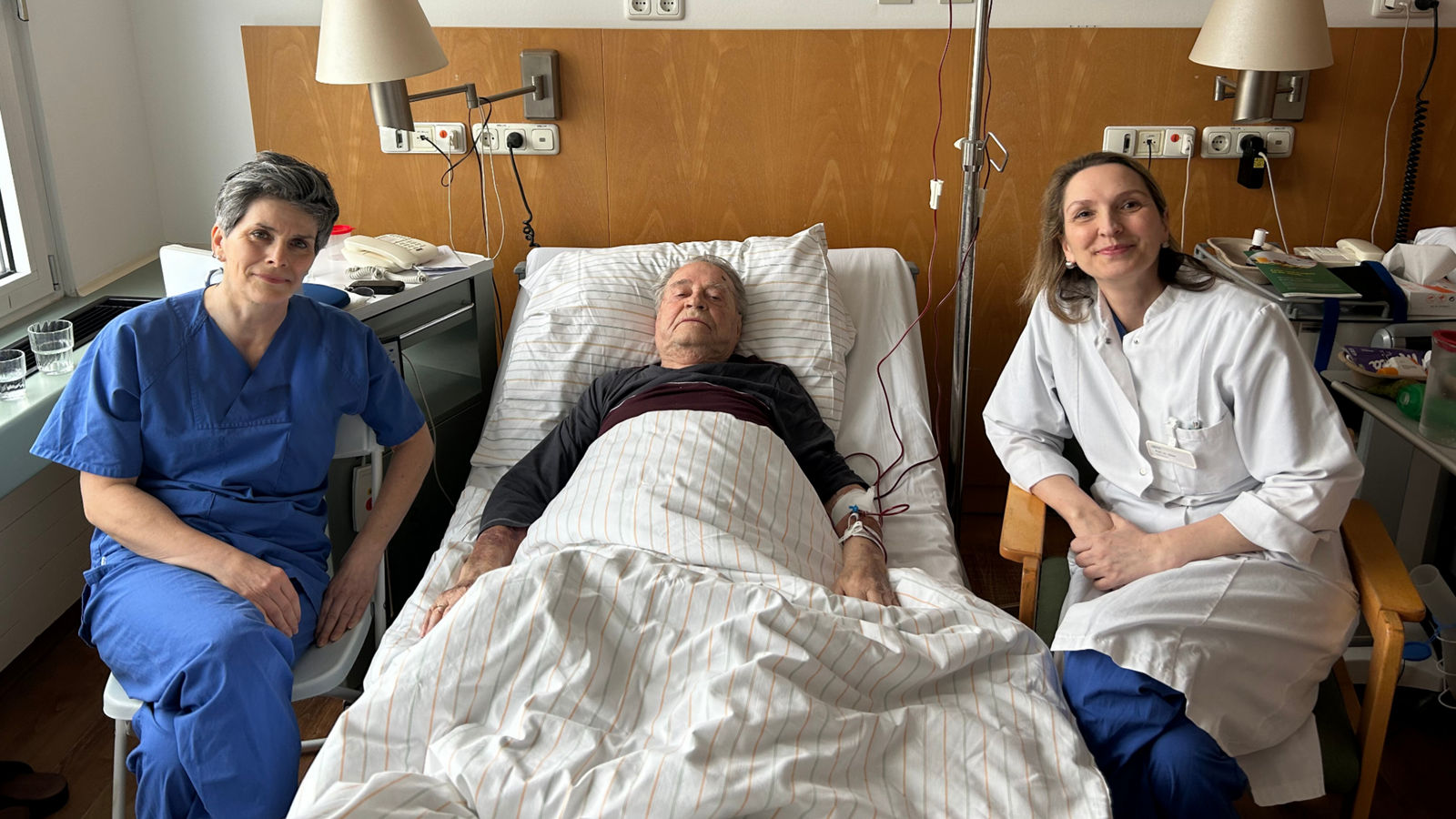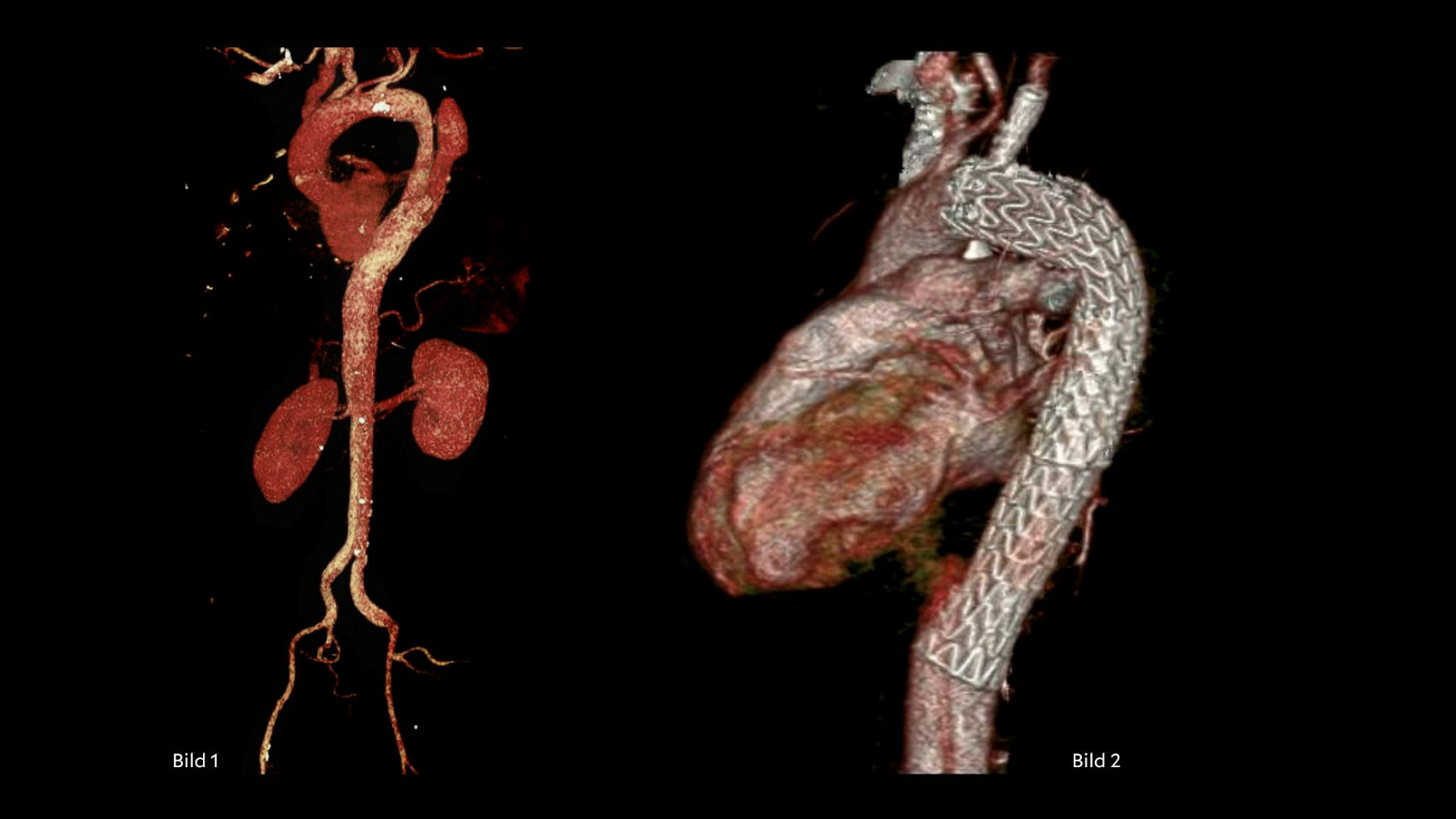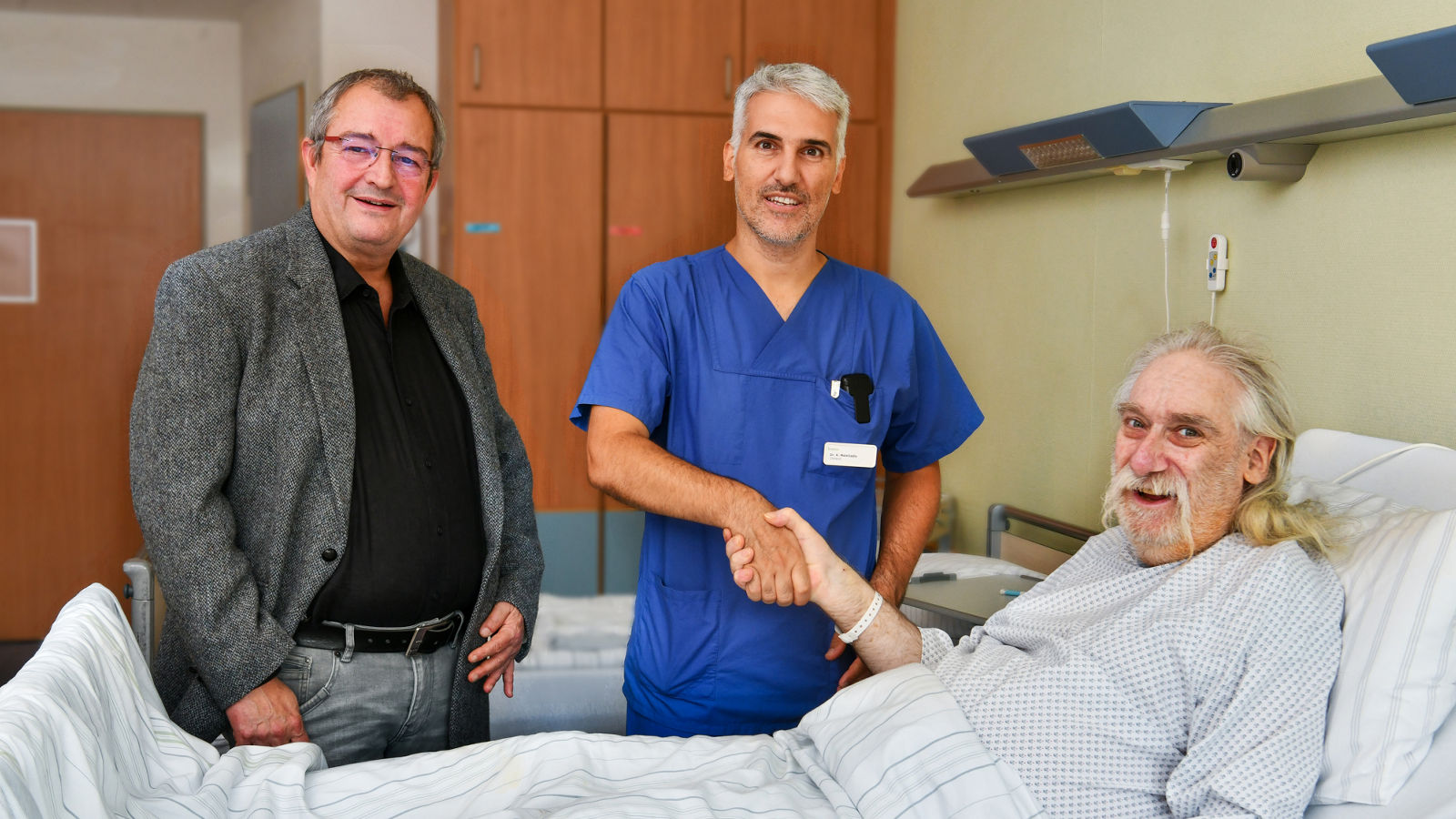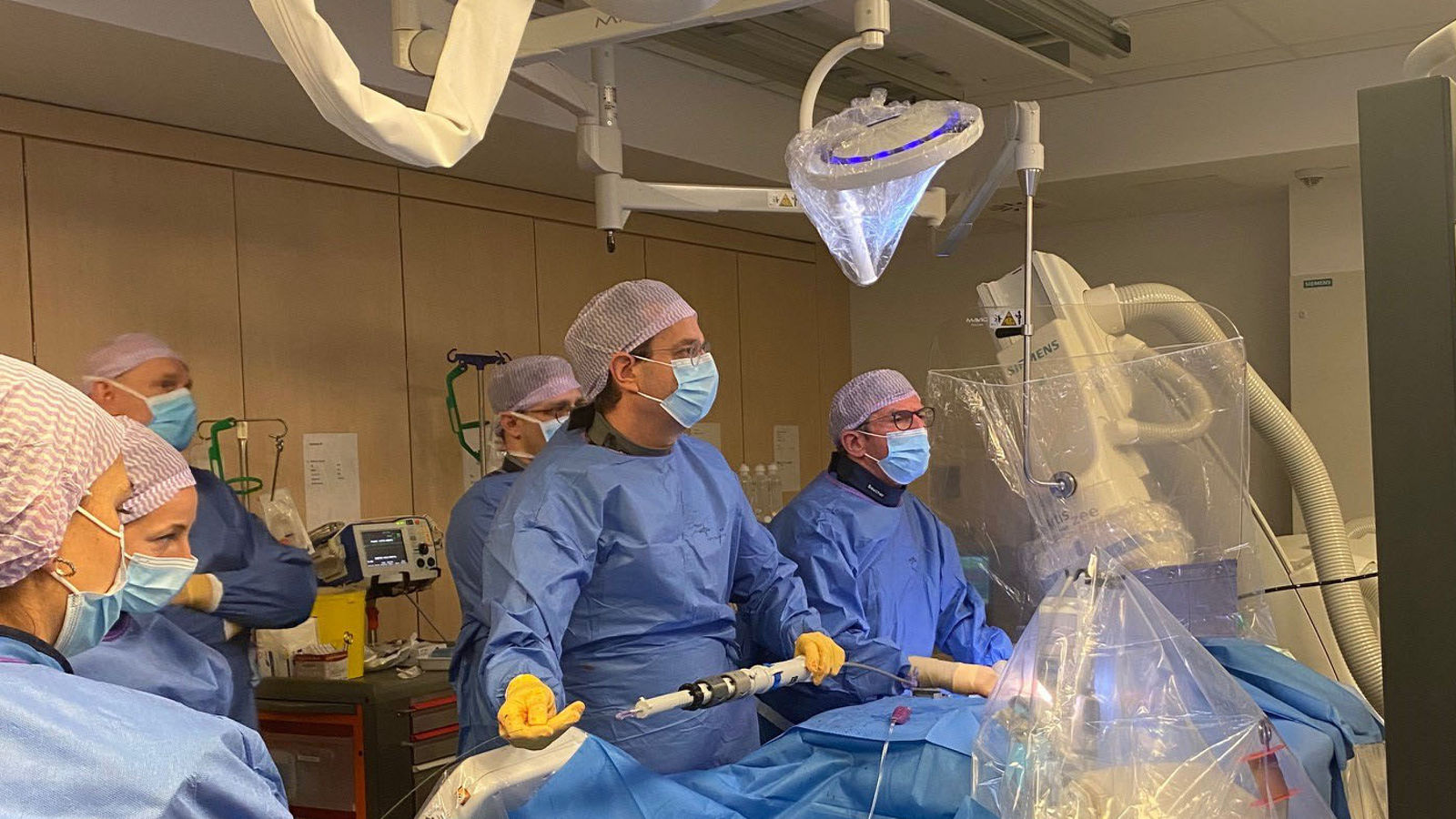
Helios Siegburg: Heart valve replacement - proven expertise as a center of excellence
The tricuspid valve is one of four heart valves. It ensures that blood flows in the right direction with every heartbeat. If this heart valve no longer closes properly, it may have to be repaired by surgery. The team at the Heart Center at Helios Hospital Siegburg offers various treatment options, including interventional valve replacement.
In this interview, Prof. Dr. Marc Vorpahl, Head of Cardiology, Rhythmology and Angiology, explains who is eligible for this procedure and how it works.
Why does the tricuspid valve need to be replaced at all?
Prof. Dr. Marc Vorpahl: As a rule, the heart valve has to be replaced because it no longer closes properly. Interestingly, this leakage is often the result of an enlargement of the right heart and is only very rarely caused by direct damage to the heart valve. In such cases, patients can often be treated very effectively with medication for years. Replacement or interventional treatment of the valve is usually only suggested at a late stage, when drug therapy is no longer sufficient and patients often have to be admitted to hospital again and again.
For which patients is the interventional method suitable?
Prof. Dr. Marc Vorpahl: The interventional approach is a very gentle procedure that is particularly suitable for highly symptomatic patients of advanced age and with relevant secondary diseases.
Why have these valves not yet been replaced interventional?
Prof. Dr. Marc Vorpahl: For years, we have had the option of repairing the leaflets of the tricuspid valve with a staple via a catheter. These staples can be controlled with millimeter precision. We can control and assess the result directly using ultrasound. The patient is asleep during the procedure. This is a very gentle and very safe procedure. However, there are also cases that could not be treated in the past and we can now offer these patients a new treatment option with interventional tricuspid valve replacement.
Why should I have the procedure performed at the Siegburg Heart Center? What distinguishes the center?
Prof. Dr. Marc Vorpahl: While the interventional "stapling" procedure was not approved in the USA until February 2024, we at the Heart Center in Siegburg have had a highly specialized team of senior physicians with proven expertise as a center of excellence for many years, where colleagues from Germany and abroad are also regularly trained.
How exactly do the procedures work?
Prof. Dr. Marc Vorpahl: All procedures take place in a so-called hybrid operating room. The cardioanesthesia colleagues induce anesthesia, so the patient is asleep during the entire procedure.
The "stapling procedure" usually takes around 1.5 hours. The procedure is accompanied by a modern ultrasound device that guides the clips with millimeter precision from the vein in the groin to the heart valve. During the procedure, it is also possible to reposition a clip, insert another clip or remove a clip again until the result is optimal for the patient.
If such a stapling procedure is not possible for anatomical reasons, we now have the option of completely replacing the heart valve with a catheter. For patients, the procedure is very similar to the stapling variant. The procedure also takes around 1.5 hours. The new heart valve is anchored into the old heart valve with millimeter precision via the catheter. The old valve is pushed aside and grows into place. However, due to the size of the valve, the patient's blood must then be diluted to ensure that the heart valve grows in safely and properly.
What does aftercare look like?
Prof. Dr. Marc Vorpahl: The studies and also our experience show that the symptoms of almost all patients improve significantly after such treatment. But of course we want to know exactly what happens. That's why patients come back to us three months after the procedure for a consultation and an examination. However, it should not be forgotten that the procedure is only aimed at treating the heart valve and that other diseases, such as those of the lungs, are often still present. Nevertheless, the procedure is often the most important component for the patient.
Read more:
-
More about Helios Hospital Siegburg
-
More about Prof. Dr. med. Marc Vorpahl
-
Do you need more information about Helios Hospitals or do you want to schedule your treatment?
Please contact our Helios International Office. We will gladly advise you!


